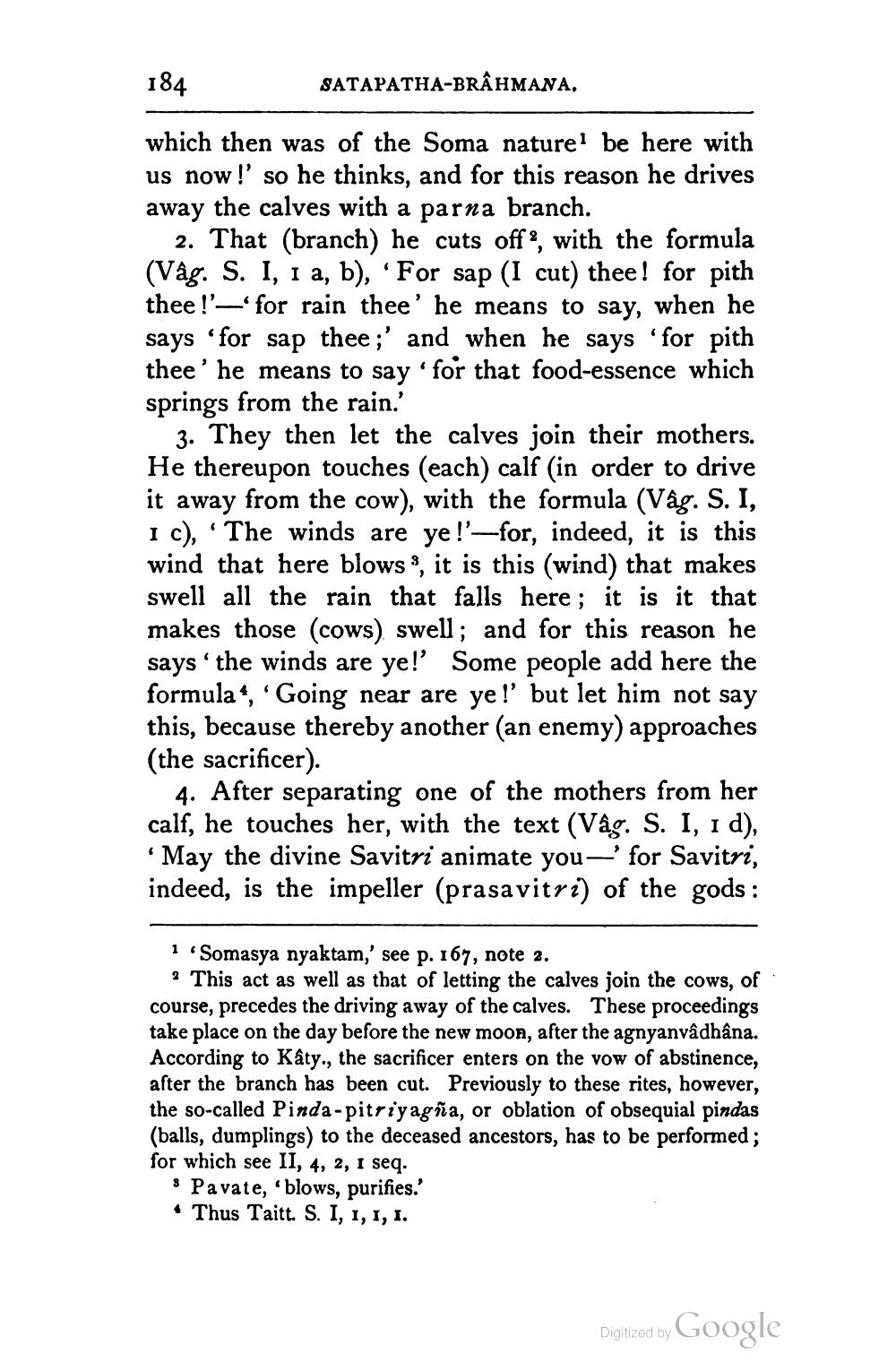________________
184
SATAPATHA-BRAHMANA.
which then was of the Soma naturel be here with us now!' so he thinks, and for this reason he drives away the calves with a parna branch.
2. That (branch) he cuts off ?, with the formula (Vâg. S. I, 1 a, b), 'For sap (I cut) thee! for pith thee !'— for rain thee' he means to say, when he says 'for sap thee;' and when he says 'for pith thee' he means to say for that food-essence which springs from the rain.'
3. They then let the calves join their mothers. He thereupon touches (each) calf (in order to drive it away from the cow), with the formula (Vág. S. I, I c), “The winds are ye!'--for, indeed, it is this wind that here blows 9, it is this (wind) that makes swell all the rain that falls here ; it is it that makes those (cows) swell; and for this reason he says “the winds are ye!' Some people add here the formula“, 'Going near are ye !' but let him not say this, because thereby another (an enemy) approaches (the sacrificer).
4. After separating one of the mothers from her calf, he touches her, with the text (Vậg. S. I, 1 d),
May the divine Savitri animate you—' for Savitri, indeed, is the impeller (prasavitri) of the gods :
1 Somasya nyaktam,' see p. 167, note 2.
? This act as well as that of letting the calves join the cows, of course, precedes the driving away of the calves. These proceedings take place on the day before the new moon, after the agnyanvâdhâna. According to Kâty., the sacrificer enters on the vow of abstinence, after the branch has been cut. Previously to these rites, however, the so-called Pinda-pitriyagña, or oblation of obsequial pindas (balls, dumplings) to the deceased ancestors, has to be performed; for which see II, 4, 2, 1 seq.
s Pavate, blows, purifies.' + Thus Taitt. S. I, 1, 1, 1.
Digitized by Google




